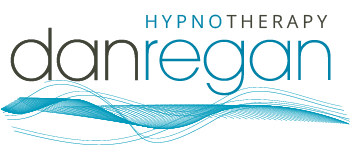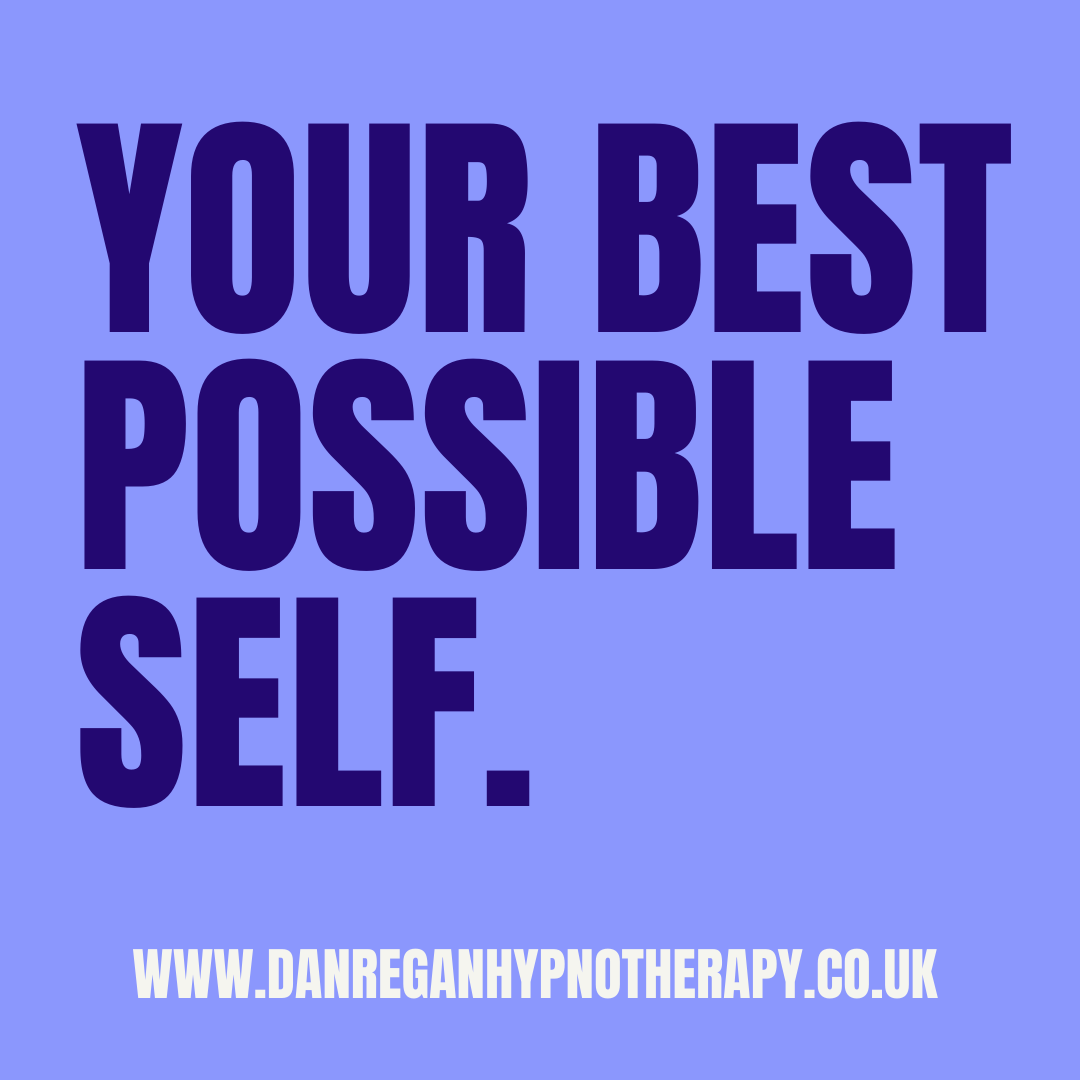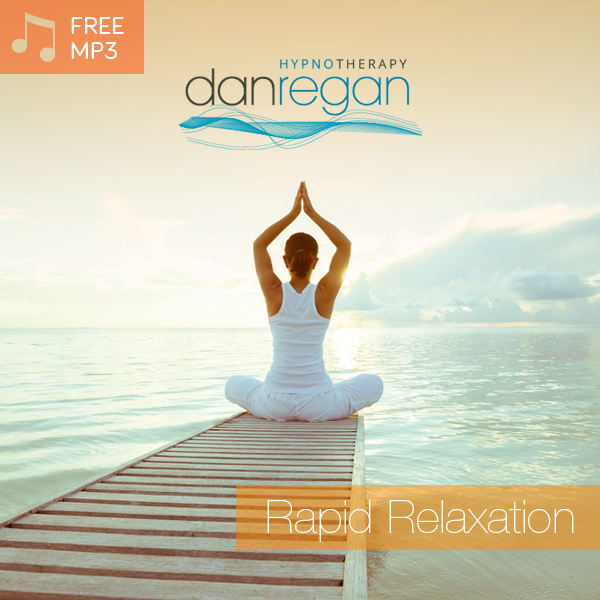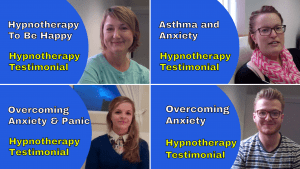Your Best Possible Self: Improve Well-being, Optimism and Positivity
As the Covid-19 pandemic continues, it’s clear that there has been a substantial detrimental impact on the mental health and well-being of many of you. The Office for National Statistics reports that well-being and happiness levels in the UK are at some of lowest ever recorded levels.
This makes it even more important than usual (although it’s always more than usually important) to take effective action to improve your optimism, well-being, positivity and to support your mental health. Recently I covered one technique, the three good things, that has evidence and research to support the benefits of adopting it as a regular practice in your life.
Today I’m talking about another evidence-based intervention that you can use to boost your optimism, well-being and positive mood, and to help reduce negative or low feelings. The Best Possible Self technique involves thinking about your best possible self in a future where you have achieved everything desired, after working hard towards it. As I’ll cover here, there is a mass of evidence to support its effectiveness, and given that it only takes a few minutes, it really is worth utilising it if you want to feel better in yourself.
How To Promote Your Sense of Well-Being
During the current pandemic it’s perhaps more important than ever to look after your mental health and well-being. Recently, I discussed the results of research that tells you how to do just that.
Dennis, Ogden and Hepper (Evaluating the impact of a time orientation intervention on well-being during the COVID-19 lockdown: past, present or future? 2020) evaluated the effectiveness of three positive psychology interventions for promoting well-being during lockdown. They looked at three interventions from positive psychology, which have different time orientations, and that have been shown to increase well-being – nostalgia (past-orientated), gratitude (focus on the present) and best possible self (which focuses on the future).
In this study, the nostalgia group thought back on a past event in their life from before lockdown, the gratitude group listed three good things that went well today and why, and the best possible self group were instructed to imagine themselves in the future, after the lockdown has been lifted and after everything has gone as well as it possibly could.
The results suggest that the greatest benefits for your well-being during lockdown come from focusing on the present, through gratitude, or the future, through the Best Possible Self.
I’ve covered this research in more detail in this article: How To Promote Your Sense of Well-Being During the Covid 19 Pandemic.
And I’ve covered the gratitude technique of focusing on three good things, and the wealth of evidence that supports it, here: Three Good Things: Positive Psychology To Enhance Your Well-Being and Mental Health. The evidence demonstrates that this technique can help you to boost your well-being, add to feeling more positive, experience lessened negative emotions and develop resilience to handle and cope with challenges.
And so today I’m writing about the other beneficial intervention from the research that can help boost your well-being, optimism and positivity.
Boosting Your Well-Being, Positive Mood and Optimism
The Best Possible Self (BPS) exercise from the field of positive psychology involves writing about your best possible self in the future after everything has gone as well as it possibly could.
There is a wealth of evidence that supports this technique for boosting your well-being, sense of optimism and your positivity.
King (The health benefits of writing about life goals, 2001) first developed the technique and had participants write descriptions of their best possible future selves for twenty minutes on four consecutive days. Doing this was found to be associated with a significant immediate increase in positive mood, and an increase in subjective well-being.
And Sheldon and Lyubomirsky (How to increase and sustain positive emotion: The effects of expressing gratitude and visualising best possible selves, 2006) had participants perform the Best Possible Self intervention for four weeks and found it to be beneficial for raising and maintaining positive mood.
The Best Possible Self exercise can also boost your optimism, that is, your belief that you will generally experience good outcomes in life (which is linked to positive mood, self-esteem, well-being and resilience). Peters et al (Manipulating optimism: Can imagining a best possible self be used to increase positive future expectancies? 2010) had participants carry out a single session of the intervention whereby they wrote about their best possible self for 15 minutes, followed by 5 minutes of mental imagery. Compared to the control condition (writing about an imagined typical day), the positive future thinking manipulation led to significantly larger increase in positive effect and positive future expectancies. The results indicate that imagining a positive future enhances your optimism.
“In conclusion, this study provides evidence for the efficacy of a BPS manipulation to temporarily enhance optimism. In addition to a more positive mood, a BPS manipulation changed the expectancies of participants for the future in a more positive direction.”
These benefits to optimism and well-being have been added to by further evidence. Meevissen, Peters and Alberts (Become more optimistic by imagining a best possible self: Effects of a two week intervention, 2011) found that daily imagery of your Best Possible Self for two weeks can lead to sustained increases in optimism. Further, people who were already high in optimism profited from the intervention to the same extend as participants low in optimism.
And in their analysis of twenty-nine studies, with a total of 3,319 participants, Malouff and Schutte (Can psychological interventions increase optimism? A meta-analysis. 2017) found that it was possible to increase optimism using psychological interventions such as the Best Possible Self exercise.
Evidence shows that higher optimism can have beneficial physical and mental health benefits, such as increasing positive mood and decreasing negative feelings, depression, and pain.
Effects of the Best Possible Self Intervention
A number of reviews of the evidence for the Best Possible Self intervention have been carried out to review its effectiveness.
Bolier et al (Positive psychology interventions: a meta-analysis of randomized controlled studies, 2013) carried out a study of the effectiveness of positive psychology interventions for the general public and for individuals with specific psychosocial problems. They found that positive psychology interventions, including the one I’m talking about here today, can be effective in the enhancement of subjective well-being and psychological well-being, as well as in helping to reduce depressive symptoms.
Whereas that study looked at the results across a wide range of positive psychology interventions, reviews have also been carried out of the evidence supporting the Best Possible Self exercise.
Loveday, Lovell and Jones (The best possible selves intervention: A review of the literature to evaluate efficacy and guide future research, 2018) describe how since its inception in 2001, the best possible selves activity has been the focus of more than 30 studies which have shown it to be a viable intervention for increasing optimism, positive effect, health and well-being.
In addition, a meta-analysis of 28 studies showed that Best Possible Self is an efficacious intervention to improve well-being, optimism and positive mood, and to decrease negative feelings and depressive symptoms (Carrillo Vega, A. My Best Self”: Efficacy and underlying mechanisms of a Positive Psychology Intervention, 2018).
More recently, a review has been carried out upon all of the studies of the Best Possible Self intervention to examine its over effectiveness in increasing well-being.
Carrillo et al (Effects of the Best Possible Self intervention: A systematic review and meta-analysis, 2019) carried out a meta-analysis of 29 studies involving nearly three thousand participants. They found that the intervention is effective in improving well-being, optimism and positive effect
Thus the Best Possible Self exercise has been extensively and comprehensively shown to be an effective intervention to improve positive effect, well-being, and optimism.
Improve Well-being, Optimism and Positivity
As I’ve covered above, there’s a mass of evidence supporting this approach. It can help you to boost your optimism, increase your sense of well-being and help you enjoy feeling more positive.
Building upon the research supporting this intervention, here’s a way you can benefit by using the Best Possible Self exercise:
1) Sit somewhere quiet, take a deep breath and close your eyes. If you know self-hypnosis or meditation techniques you could incorporate these here. Start to extend your out breath and say the word ‘relax’ to yourself on every breath out. You could tense and relax each part of your body or tell yourself that each part of your body is relaxing. You could imagine a calm colour or sensation spreading through you or fill your mind with a relaxing sound. You could engage your imagination and imagine being in a remembered or created place of calmness, seeing the sights and hearing the sounds. Or you can draw upon and utilise any other ways that allow you to feel comfortable, calm and relaxed. Your aim here is just to feel as safe, calm and comfortable as you can right now.
2) Being calm and comfortable, now start to think about your best possible self. In your mind, imagine it as best as you can. Imagine it as if you were looking at it on a big screen, like a cinema screen.
Thinking about being your best possible self means that you imagine yourself in the future, after everything has gone as well as it possibly could. You have worked hard and succeeded at accomplishing all the goals of your life. Think of this as the realisation of your dreams, and that you have reached your full potential. Thus, you identify the best possible way that things might turn out in your life.
3) As you continue to imagine your best possible self in the future, where everything has turned out a well as it can, make it as vivid in your mind as you can. Add colours, sounds and details and engage your imagination and your senses. Make it personal and positive. Make it so good that it feels good just to imagine it.
4) As you continue to think about and imagine the best possible way that things might turn out in your life, you may want to think about your positive goals for yourself, things that you want to achieve physically and psychologically for yourself. The type of thinking, mindset, skills and development you desire. You may want to think about any professional or career related goals, accomplishments, knowledge and skills. And you may want to think about and consider any aspects of your relationship and contacts with loved ones, friends and colleagues and activities and aspects of your social interactions and relationships.
As you continue to focus on your best possible self, you may want to think about how you would overcome any obstacles in the way of achieving your goals and how any goal worth achieving may take time, effort, commitment and continuously learning new skills and thinking patterns. Think of yourself as someone who is adaptable, resilient and capable of creating positive, relentless momentum in your life and how you are capable of achieving your goals and taking the steps required to do so.
Really think about, consider and imagine everything that is part of your best possible self in the future, achieving your potential, your goals, skills and desires. Clearly imagine a future in which everything has turned out as well as possible for you and you have achieved all your life goals.
5) Now, keep thinking about your best possible self and begin to think how you will use this to guide your decisions from today, and then start to think of a small step you can take towards a particular goal you have. Think about the actions that are now required and start to imagine yourself taking those steps.
6) Having spent as much time as you want to thinking about and imagining your best possible self, take a deep breath and open your eyes.
Know that you have promoted your well-being, optimism and positivity from this exercise today. Enjoy repeating this evidence based technique where you imagine a future in which everything has turned out as well as possible and you have achieved all your goals, and then go and take the action you thought of that will move things forward in your life for you.
If you would like a guided version of this awesome, beneficial process then do take a look at this hypnosis download: Your Best Possible Self Hypnosis Download.
This intervention is an effective way to boost your optimism, well-being and positivity. And from doing this you will enjoy more good thoughts and feelings, you will promote your physical and mental health, you will progress your goals and you will get to enjoy feeling happier and feeling better in yourself.
To your health and happiness,
Dan Regan
Online Skype and Zoom Hypnotherapy
Face-to-face hypnotherapy in Ely & Newmarket
Struggling with anxiety, stress, worry and fear and need some help? Find out how I can help with a Complimentary Hypnotherapy Strategy Session. Learn more here: Appointments
Find out what dozens of other people have said after their hypnotherapy sessions with Dan: Hypnotherapy Testimonials
And check out these powerful hypnosis downloads that can start helping you right away with anxiety, confidence and more: Hypnosis Downloads
References:
Bolier, L., Haverman, M., Westerhof, G.J., Riper, H., Smit, F. and Bohlmeijer, E., 2013. Positive psychology interventions: a meta-analysis of randomized controlled studies. BMC public health, 13(1), pp.1-20.
Carrillo, A., Martínez-Sanchis, M., Etchemendy, E. and Baños, R.M., 2019. Qualitative analysis of the Best Possible Self intervention: Underlying mechanisms that influence its efficacy. Plos one, 14(5), p.e0216896.
Carrillo, A., Rubio-Aparicio, M., Molinari, G., Enrique, Á., Sánchez-Meca, J. and Baños, R.M., 2019. Effects of the Best Possible Self intervention: A systematic review and meta-analysis. PloS one, 14(9), p.e0222386.
Carrillo Vega, A., 2018. ” My Best Self”: Efficacy and underlying mechanisms of a Positive Psychology Intervention.
Dennis, A., Ogden, J. and Hepper, E.G., 2020. Evaluating the impact of a time orientation intervention on well-being during the COVID-19 lockdown: past, present or future?. The Journal of Positive Psychology, pp.1-11.
Heekerens, J.B. and Heinitz, K., 2019. Looking forward: The effect of the best-possible-self intervention on thriving through relative intrinsic goal pursuits. Journal of Happiness Studies, 20(5), pp.1379-1395.
King, L.A., 2001. The health benefits of writing about life goals. Personality and social psychology bulletin, 27(7), pp.798-807.
Layous, K., Nelson, S.K. and Lyubomirsky, S., 2013. What is the optimal way to deliver a positive activity intervention? The case of writing about one’s best possible selves. Journal of Happiness Studies, 14(2), pp.635-654.
Loveday, P.M., Lovell, G.P. and Jones, C.M., 2018. The best possible selves intervention: A review of the literature to evaluate efficacy and guide future research. Journal of Happiness Studies, 19(2), pp.607-628.
Malouff, J.M. and Schutte, N.S., 2017. Can psychological interventions increase optimism? A meta-analysis. The Journal of Positive Psychology, 12(6), pp.594-604.
Meevissen, Y.M., Peters, M.L. and Alberts, H.J., 2011. Become more optimistic by imagining a best possible self: Effects of a two week intervention. Journal of behavior therapy and experimental psychiatry, 42(3), pp.371-378.
Peters, M.L., Flink, I.K., Boersma, K. and Linton, S.J., 2010. Manipulating optimism: Can imagining a best possible self be used to increase positive future expectancies?. The Journal of Positive Psychology, 5(3), pp.204-211.
Sheldon, K.M. and Lyubomirsky, S., 2006. How to increase and sustain positive emotion: The effects of expressing gratitude and visualizing best possible selves. The journal of positive psychology, 1(2), pp.73-82.





0 Comments